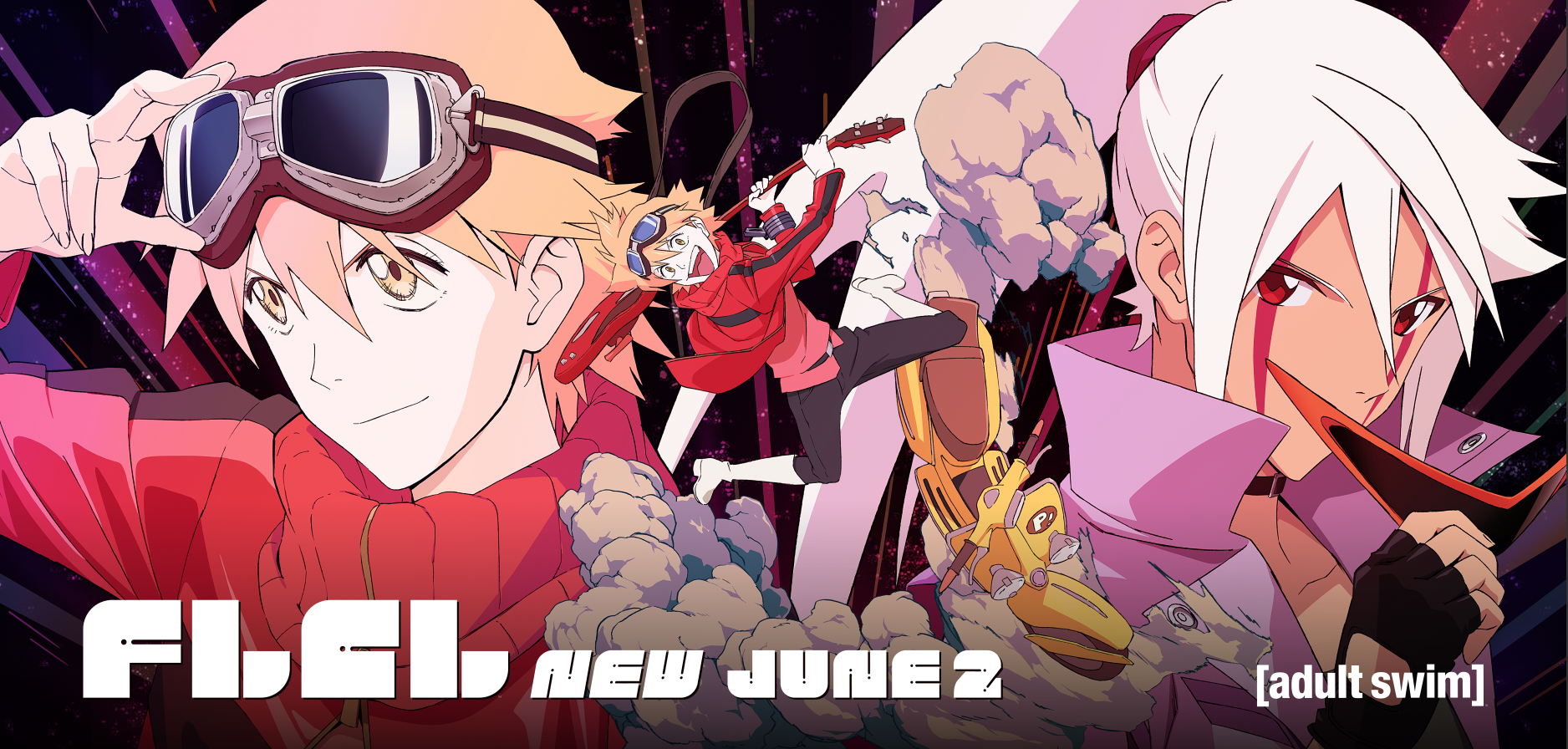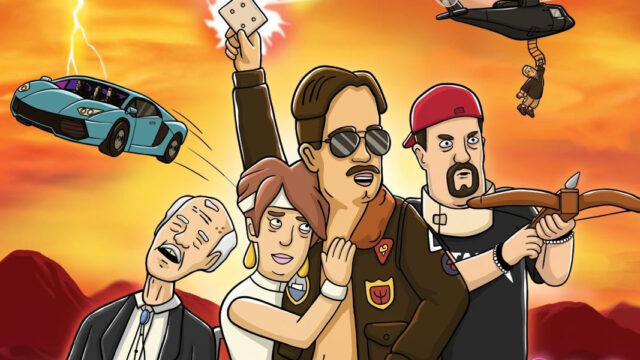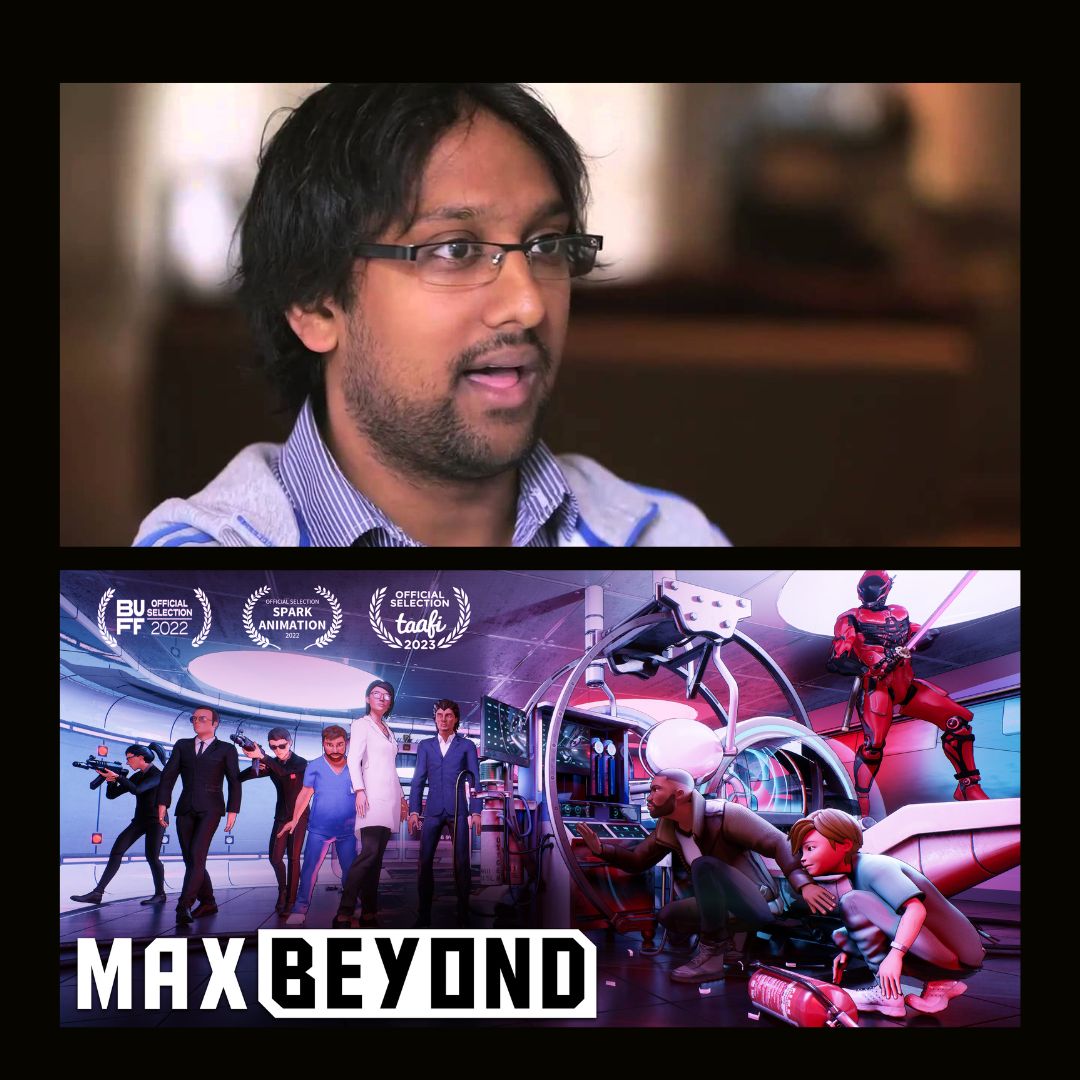English Dub Season Review: FLCL Progressive
The sequel that has nothing it wants to be and nothing it wants to do.
Reviving a beloved classic after over a decade is never easy, and often thankless. The odds are always against you when it comes to living up to expectations, made even harder if you don’t have a lot of what made the original so memorable. Still, it isn’t hard to come up with something good, or even great, as long as there’s a clear knowledge of the material and universe they have to work with. And if not that, a drive to make their own statement about the work they’re reviving.
While I can’t honestly say they have much of the former, Production I.G. has made clear they have plenty of the latter. For better or worse, Progressive feels a lot like what an FLCL type story would be translated into in this current era of anime, with its characters representing very different ideas and concepts that they would have in the 2000’s. Unfortunately, the development of these characters reveals a major misconception with how FLCL managed to connect to its audience. That first season centered its energy on a character’s emotional journey and surrounded it with corresponding crazy imagery. Progressive seems to be content with the crazy things simply happening to the characters.
Speaking of characters, Hidomi is our designated protagonist for this season, and so is meant to be the emotional center of the story. She starts the season in an aimless funk about her future and has unresolved issues with her absent father and her overcompensating mother. These seem like prime real estate to form a journey around, much as Naota’s came from his lack of proper mature role models and an absent brother. It’s a shame, then, that these aspects of Hidomi’s potential story are basically pushed to the side for the majority of the runtime and don’t really have much impact on the plot in any significant way. Even worse, Hidomi’s essentially a spectator for a lot of the episodes, taking no initiative until the tail end of the season. Much of her involvement before that is either being hit by stuff, running around or being dragged, and waiting for something relating to physical abuse or her emerging vore fetish triggers her NO portal, which then has many inconsistent effects that don’t really relate to anything in terms of her development. Unlike Naota’s story, which showed a more or less straightforward path to understanding that being an “adult” is about realizing that you’re still a kid, Hidomi’s development has no such trajectory and ends up fitting her bookend mantra about “wanting nothing” a bit more fitting than they probably intended.
Her behavior in Episode 4 seems to come close to what they might’ve wanted to say about Hidomi and her arrested development, as well as a key example of how it was mishandled. When her Macguffin headphones are drilled into her head, she becomes a loopy airhead that couldn’t be farther apart from her usual gloomy self. She responds to Ide’s claim of her changing by saying she’s always been that way, as well as bringing up how much her father’s absence has impacted her and her mother. As far as I can tell, this could be how Hidomi was as a child: not fully knowing what was happening around her and acting naively happy through it all. I think this could’ve been a good opportunity for her to reflect on these two versions of herself and how they are both parts of the same person, thereby reconciling them and allowing her to take the headphones off herself, as well as drawing a parallel between her situation and Haruko’s. Instead, the headphones come off because of something else outside of her control, teaching her nothing about herself or what the heck her abilities are supposed to do.
A lot of what could’ve been Hidomi’s big turning points and growth moments actually end up going to Ide, who doesn’t get off much better in the character writing. He starts as a pretty typical sex-obsessed teenager (a bit like an older version of Naota’s friend Gaku from the original season), but finds himself needing to take major action when thrust into the craziness between Haruko and Jinyu. Especially when it comes to protecting his eventual sweetheart Hidomi from robot attacks, nosebleeds, kidnappings, and general mind-screwary. We get some insight into his background in the second episode, seeing that he comes from the slums and does hard labor while selling homemade weapons on the side. Much like Hidomi’s daddy issues, this is all but forgotten after this point, making me wonder why it was added at all and made even worse when he is removed from most of the final conflict in such an insane way that I can’t describe without feeling like I woke up from a fever dream. To make another comparison to the old show’s main human relationships, Mamami and Naota’s weird flirting was anything but healthy, but we understood a lot of Mamimi’s behavior came from abandonment issues caused partly by Naota’s brother, and that drove the actions she took, for good or bad. Ide’s a good guy, but wacky balloon transformation or not, he’s pretty standard as a character, and if there’s one thing I don’t look for in FLCL, it’s characters being standard.
Jinyu, above all others in the new cast, was definitely the one with the most potential and an initially interesting idea behind her. As revealed in the ending credits and more overtly in the first few episodes, she is one half of Haruko split off from her upon absorbing Atomsk’s power. The fourth episode seems to explain where the psychological split happened between them: Part of Haruko wanted Atomsk all to herself, and the part that became Jinyu came to a realization that he was better off free. The exact history between the two upon becoming separate beings is unclear, but Jinyu seems mostly set on simply stopping her other half from pursuing further capture ideas (though not necessarily concerned with what potential victims do as long as they aren’t helping Haruko). The first three episodes sort of put her in Haruko’s “housemaid who ran over the main character with a motor vehicle” role, but she ends up having a pretty benign presence in the world beyond showing up when a fight or exposition scene is required. She has the most presence in the fourth episode, where she gets to flesh out her conflict with Haruko a bit before an inexplicably large scale fight, but what’s more shocking than the fight or her re-absorption into Haruko is that she’s not particularly missed by any of the characters, including Hidomi and Ide who owe her their lives on at least a couple of occasions now. And because things weren’t confusing enough, she ends up outside Haruko again in the finale, but mainly as a way to show her how to let go of Atomsk. By the end of the season, she’s a free agent again, but with both sides in agreement, what’s the point of staying apart now?
Haruko (or Raharu going by the cast announcement and episode descriptions) is in a unique position as the only real returning character from the original series (I don’t even know where to begin with Canti as he’s presented here so he’s out). The main conceit of this version seems to be taking Amarao’s speculation about her being actually in love with Atomsk and running with that, when before it could’ve easily been seen as just her craving his power. My own speculation would be that Raharu is the irrational half of Haruko driven more by her emotions and passion than the calculating more level-headed one from the first season, though I don’t have much to entirely confirm this. Raharu certainly makes plans of her own, though none of them seem to be thought out or lead anywhere. I had hopes that her pretending to be a school teacher was her testing out what she’d learned from observing Naota and putting it to practice by ramping up the adolescent insecurities of her students to produce NO, but that fizzled out. She seemed pretty focused on getting Hidomi’s headphones off, but never specifies what she wants out of that. And then by the end, she can apparently turn a roller coaster into a giant birdcage, but is immediately absorbed by the bird it meant to cage. Basically, she’s…kinda dumb, and I’m hoping this is just her dumb side and not what we’re meant to see as the same troublemaker from the original. Guess we’ll see when we get to Alternative.
Then there’s the supporting cast, who are probably interesting and charming in their own right but don’t add much of anything substantial to wherever the story is trying to go. Mori oddly manages to break the stereotype of fat characters only being about eating but doesn’t do himself any favors by having his only goal be to get a girlfriend to the point of paying for one. Marco is kind of a blank slate aside from his brief crush on Hidomi. Hidomi’s mom is a little odd with how affectionate she is but I still found it pretty strange for her to say she had never “felt or acted like a mom” to her daughter. Aiko is just a bundle of confusion I can’t get into right now, and the duo of Masurao and Eye Patch are pretty pale imitations for Amarao and Kitsurabami without the personal link to anyone in the main cast.
And of course I should mention the ending, and how it was a visual wonder, but a total misfire. Putting aside the Immigration Forces and Medical Mechanica were probably never meant to be so prominent that they could trigger a giant battle like that, Hidomi’s big development regarding her issues with her mother rings pretty hollow due to its previous lack of focus, and thus leaves her transformation into a Canti like robot with her own custom guitar as an all style, no substance moment. Aside from Haruko possibly learning her lesson about boundaries and Hidomi and Ide hooking up, I cannot for the life of me tell you what happened in this climax beyond the superficial.
Ideally, a story should reflect its ideas in its main protagonist, and FLCL Progressive does manage that. However, like Hidomi, the show is pretty and quirky and can probably do a lot of cool stuff if it puts its mind to it, but that’s no substitute for having a core and structure through which things can revolve. And yet, I am weirdly glad that FLCL was brought back, even if this is what we got out of it, because maybe this will connect with the current budding anime viewer in a way I can’t figure out. And even if that doesn’t work, there’s always Alternative to look forward to in September.



























Hi Ashley, thank you so much for reading and we love the feedback. Note that on that day we had 14th posts go up and only ten posts show on the front page, so it's possible the preview had already been archived by the time you got to it. One recommendation would be to add our RSS feed to your favorite news aggregator service like Feedly, this way you get all of the latest posts!